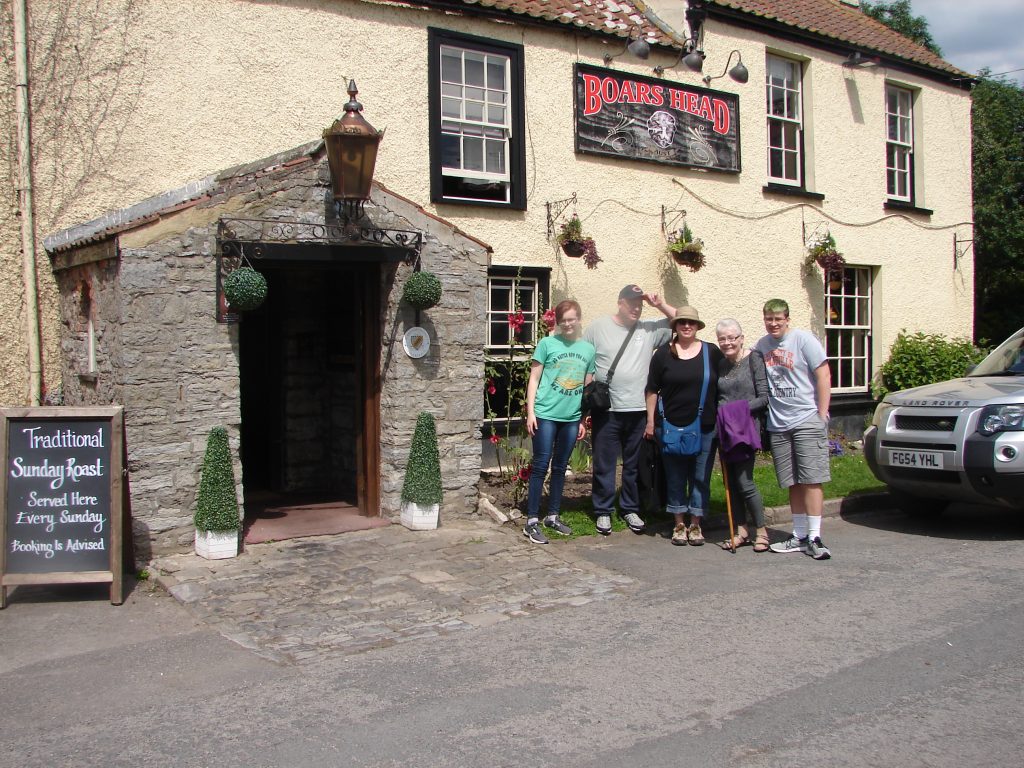 Recently, I have been discussing various medieval English place names found in specific books in my West Country Medieval Mystery Series featuring my heroine, the Lady Apollonia of Aust. This month, I want to share reasons for my selection of Aust as the home village of the Lady. The picture on the left shows the sign, erected at the beginning of the current millennium, welcoming visitors to the Village of Aust.
Recently, I have been discussing various medieval English place names found in specific books in my West Country Medieval Mystery Series featuring my heroine, the Lady Apollonia of Aust. This month, I want to share reasons for my selection of Aust as the home village of the Lady. The picture on the left shows the sign, erected at the beginning of the current millennium, welcoming visitors to the Village of Aust.
The name of the village is very dear to my heart since my name before marriage was Ruth Ellen Aust. My brother and I were interested in tracing our Aust roots and made our first trips to England in 1986 and 1987. We visited villages in Wiltshire such as Colerne and Marshfield about which I wrote in my last two blog postings. Also, we visited the village of Atworth in Wiltshire from which my grandfather Aust emigrated to Ohio as well as the nearby the town of Melksham. These last two names in Wiltshire are places where some of my English relatives still lived in the 1980’s, so my brother and I could meet them as well.
John Somerton, an amateur genealogist in England, was able to trace my Aust ancestors back 13 generations. Last month I wrote about Ferdinando Aust at the top of the family tree which John Somerton created for us. Perhaps Ferdinando or one of his predecessors took the family surname from the village of Aust.
So, my brother. Jim, and I felt that we had to visit Aust, an ancient village in Gloucestershire where ferries have connected England to Wales since Roman times until they were replaced in the 1960’s by a motorway bridge. The picture on the right shows my brother and me in 1986 standing next to the village sign that was replaced in the new millennium. A picture of me with my cousin Dennis Aust at the earlier village sign in 1993 is shown below.
The village of Aust inspired me on these and other visits to make Aust the primary setting for my first novel, Effigy of the Cloven Hoof. The great love of Lady Apollonia’s life in my novels was Edward, a franklin from Aust. Apollonia married Edward after the death of her first husband and moved to his home in Aust where the couple raised five sons.
When I first visited Aust, the medieval parish church was redundant and not open to the public. There were graves in the churchyard which were well tended, but the church seemed to have no patron saint. Eventually, I learned that John Wycliffe, the 14th century reformer, had the living of this medieval church just when Lady Apollonia and Edward were raising their five sons. Although the Oxford scholar probably spent little time in Aust, I had to work this real-life character into my stories. Happily, the church in recent years has reopened as the Chapelry of Saint John and offers limited religious services as the daughter church of a nearby village.
On our last visit to Aust in 2019 with our younger son, Charlie, and his family, we enjoyed eating at The Boar’s Head, a pub in the village that survived after the ferry to Wales ceased to operate when the M4 motorway built a suspension bridge across the River Severn at Aust. A picture of us waiting to go into The Boar’s Head appears at the end of this posting. The village went through a period of decline towards the end of the 20th century, but the Boar’s Head pub survived, perhaps because Aust is about equal distance between Bristol and Cardiff. Businessmen from these two cities could meet there for a very good lunch together.
 In our more recent visits, we have the sense that Aust is becoming more prosperous. It no longer offers a ferry across the River Severn, but people who work in Bristol seem to find it a desirable distant suburb of Bristol in which to live.
In our more recent visits, we have the sense that Aust is becoming more prosperous. It no longer offers a ferry across the River Severn, but people who work in Bristol seem to find it a desirable distant suburb of Bristol in which to live.
Please join us again next time to discuss yet another aspect of my Lady Apolonia’s medieval life.

